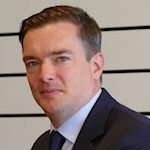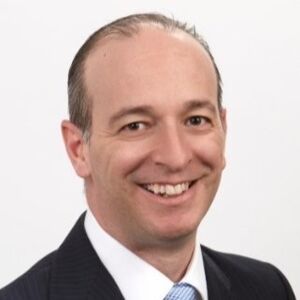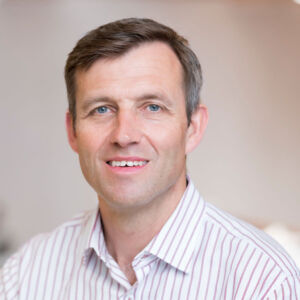The easy products are gone - Q&A with ETF Securities' Kris Walesby

There are now just under 250 exchange traded products on the Australian Stock Exchange but more are coming to market and finding investor appetite even during lockdown. ETF Securities launched the ETFS FANG+ ETF seven weeks ago and Industry Moves spoke to chief executive officer Kris Walesby about how that ETF has fared and what's involved in an ETF launch.

There are now just under 250 exchange traded products on the Australian Stock Exchange but more are coming to market and finding investor appetite even during lockdown. ETF Securities launched the ETFS FANG+ ETF seven weeks ago and Industry Moves spoke to chief executive officer Kris Walesby about how that ETF has fared and what's involved in an ETF launch.
How have you adapted over the past few months?
It's been a bit of a weird time. Even though it's irritating to be locked down I'm just feeling lucky. There are hardly any cases [in Australia] unlike many people back in the UK.
The first two weeks were intense, changing strategy and trying to do that in a short period of time with everyone at home was intense. As a company, there are only 15 people in our company, and we're pretty good at adapting.
You can't do things in the same way ... anything group is probably not ok. I don't see people hand shaking each other for years, just because it's a risk
What goes into the decision to launch a specific ETF?
Normally there is some type of regular committee, for us it's every fortnight, where people are able to raise product initiatives that they are thinking have got legs. That's normally sales people. It doesn't have to be, but they are the ones in the trenches so have a better view on what people are asking for.
Our [committee] is relatively structured in that nobody is allowed to raise anything unless they have written and tabled a report in advance. It's normally conceptually some basis for why that person thinks it would work and then what does working mean.
We then move it to the product development team, which is part of the portfolio management team. They will look at the product in a lot more depth - what indexes are available that will do what that person who has raised that concept wants; what's the competition; what level of fees could we possibly charge; potential issues etc.
After a deep dive they come back, do recommendations and basically present it to the team. If it stacks up the sales team then goes out and finds out if clients would actually buy it. We don't take pledges but we do see if there are enough people interested that we believe it is going to work.
What goes into launching a new product?
We have an existing relationship with JP Morgan [as custodian]. They will expect us to give them significant amounts of detail into what the index is and that gives us an indication of the stocks.
All of that is wrapped up and sent as an application to the ASX. In Australia the regulator and the exchange are very close.
If it's a completely new product type the ASX may move it to ASIC to decide whether it's allowed or not. The ASX are very very thorough. Their product team are made up for lawyers or people who are very legally minded.
They look at whether it is transparent, does what it is supposed to do, is in investors best interests, are you able to deliver in a way that is 100% consistent as much as possible.
Other things you need to consider are things like market makers. The ASX will make sure there is a commitment in writing from that particular market maker.
Typically an ASX application takes between three to five months (the prior preparation to that takes about six months).
I think most product providers are taking longer to launch because the easy products are gone.
What are some of the marketing strategies that might be involved?
In terms of marketing and distribution about two months out you go into launch strategy. The marketing strategy and distribution are putting imagery around it and why you would buy it.
The launch of ETFs is no longer exciting so a lot of time will be spent into how you make the product appealing.
As a good example we launched the ETFS FANG+ ETF seven weeks ago. Now we launched that into the lockdown because we believe that when the market comes back people will want those [global innovative] stocks.
Obviously we couldn't do a launch party. It's almost $10 million now but it started at $1 million. Sometimes you can have a product that people just want. That FANG product, the ASX is down 18% YTD - the FANG index YTD is up 11%.
What's involved in putting together a product disclosure statement (PDS)?
We have two master PDSs (commodity and equity) so these always come in as supplementary PDS. It's like children, every child has a distinct form but they come under the same family descriptor.
We spend a lot of time on the PDS but many aspects of the PDS will look similar to parts of other PDSs. The index needs to be covered in a lot of detail because the index is very specific to that product.
We write it in house to the best of our ability but we don't do anything to it until it's signed off by Minters. It needs to be compliance approved as well.
In Australia my view is that the products that have been built are very very structurally safe, there are very few that are not physically backed.
How do you decide on service providers?
For legal we vetted six firms and went with Minter Ellison because of their deep experience of fund managers and ETFs.
For KPMG [our auditors], our parent has a global relationship with them.



